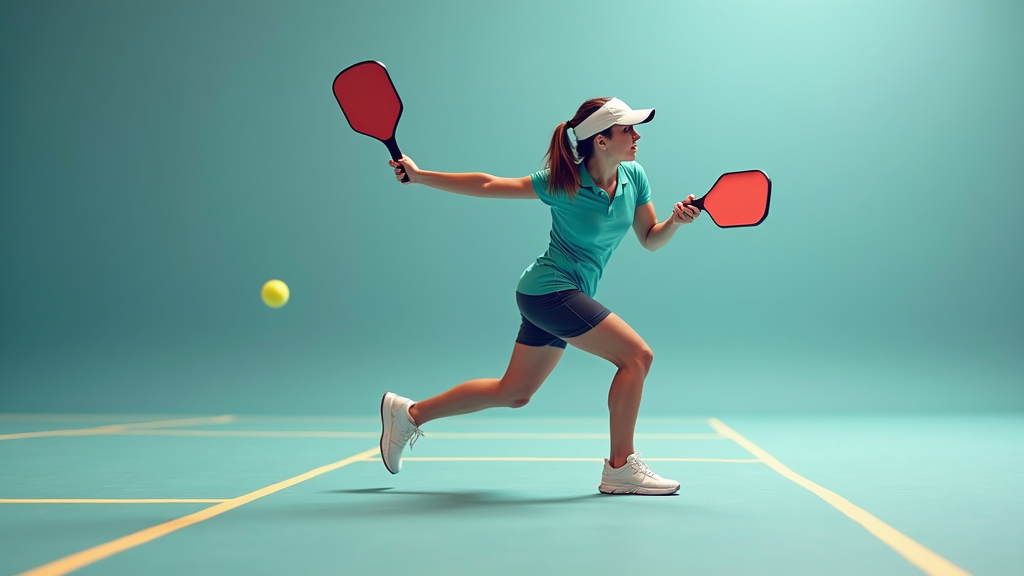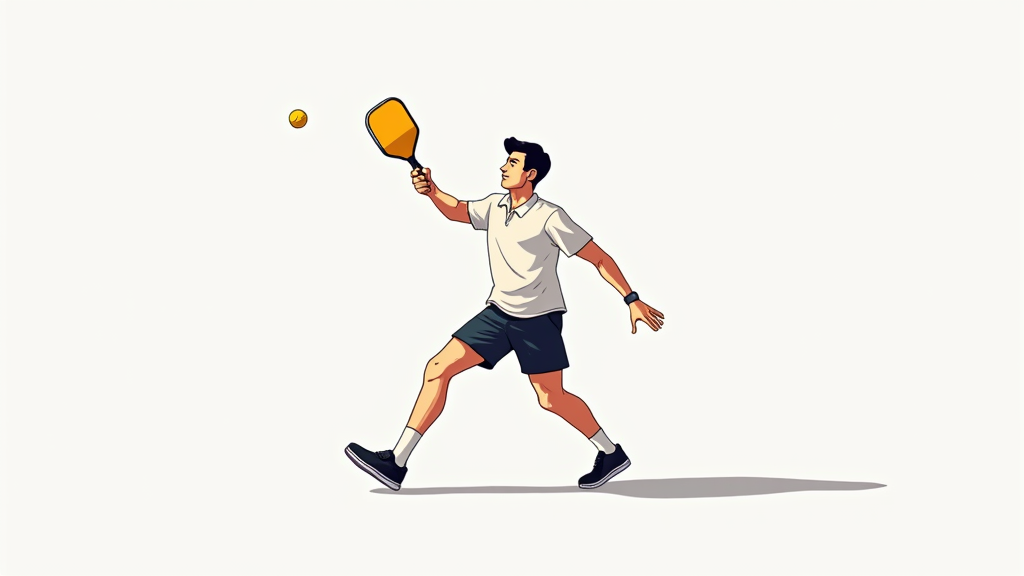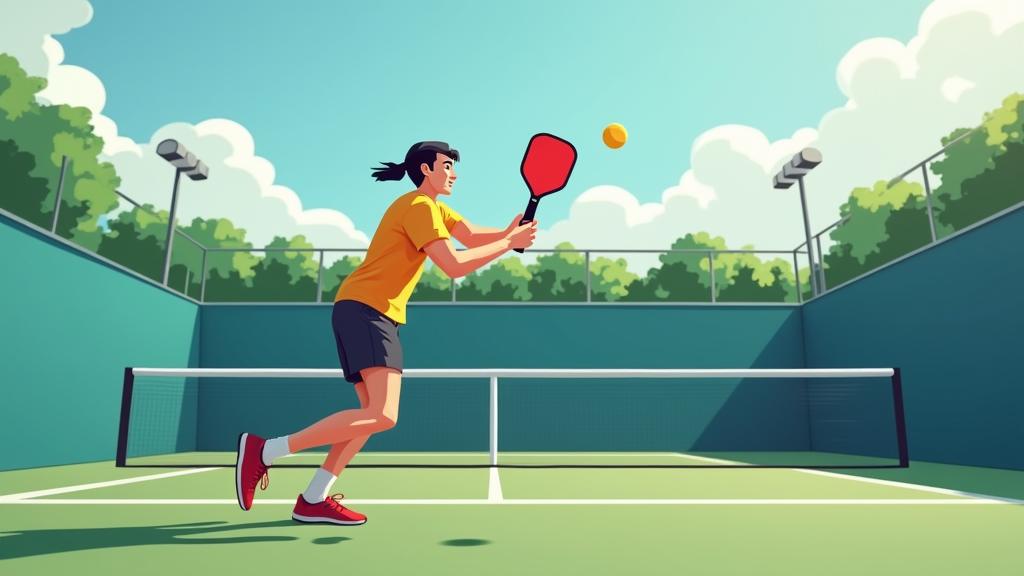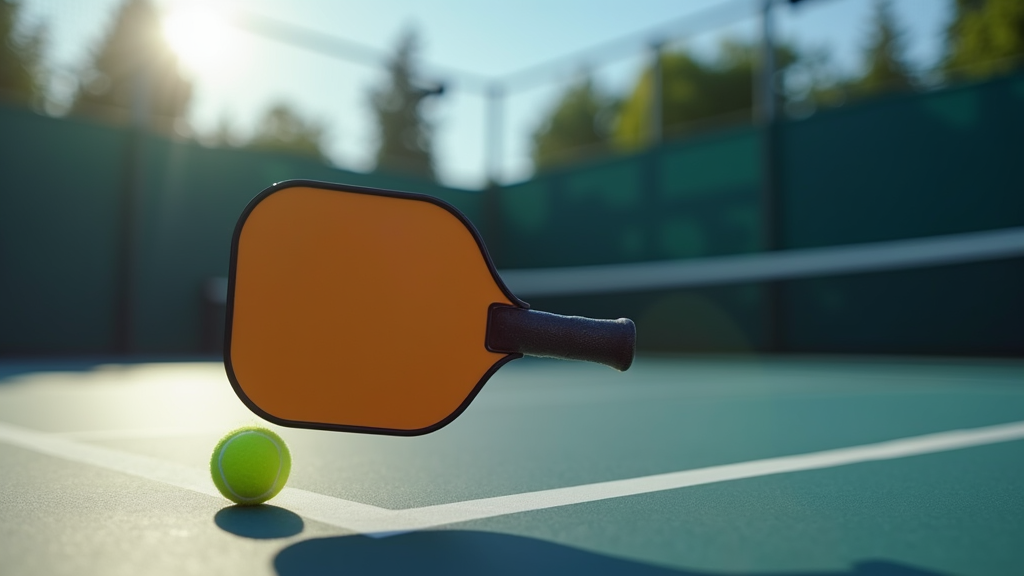Table of Contents
- Understanding the Pickleball Paddle Swing Analysis Outline
- Understanding Pickleball Paddle Swing Analysis Outline
- Detailed Pickleball Paddle Swing Analysis Outline
- Pickleball Paddle Swing Analysis: Performance Categories
- Understanding Pickleball Paddle Ranking Tiers for Analysis
- Pickleball Paddle Swing Analysis: Shapes and Dimensions
- Analyzing Pickleball Paddle Spin Rating System
- Lightweight vs. Heavier Paddles: Swing Analysis Implications
- Choosing the Right Paddle: A Swing Analysis Perspective
- Paddle Metrics and Data Analysis for Pickleball Swing
- Concluding Your Pickleball Paddle Swing Analysis Outline
Understanding the Pickleball Paddle Swing Analysis Outline

Importance of Analyzing Pickleball Paddle Swing Dynamics
Understanding the characteristics of your pickleball paddle swing is crucial for optimizing your performance on the court. Selecting the right paddle, based on detailed swing analysis, can significantly improve your power, control, and overall gameplay. Swing weight, for example, impacts shot control by up to 30%, making it a critical factor in your paddle choice. A proper analysis improves shot accuracy, reduces fatigue, and enhances overall enjoyment of the game.
Historical Context of Pickleball Paddle Swing Analysis
Early pickleball paddles were simple wooden designs with little consideration for swing weight or balance. These rudimentary paddles offered limited control and power. Recent developments in material science and data-driven analysis have revolutionized paddle selection. The introduction of composite materials like graphite and carbon fiber, coupled with advanced testing methodologies, allows players to fine-tune their equipment for optimal performance. Paddle Analytics Master Dashboards now consolidate crucial paddle data in one location, making analysis easier than ever.
Key Takeaways: Mastering Pickleball Paddle Swing Analysis
In this guide, you will learn the core concepts of pickleball paddle swing analysis, including swing weight, paddle balance, and the impact of different materials on paddle performance. We will explore practical applications of this knowledge, enabling you to select the right paddle for your playing style and improve your shot consistency. You’ll also gain a comprehensive understanding of pickleball metrics and how to choose the right gear to elevate your game.
Understanding Pickleball Paddle Swing Analysis Outline
Fundamental Concepts for Paddle Swing Analysis
When diving into pickleball paddle swing analysis, understanding fundamental concepts is crucial. Two key definitions to grasp are swing weight and balance point.
- Swing weight refers to how heavy a paddle feels when you swing it. It’s usually measured in grams or ounces and significantly impacts your swing speed and power.
- Balance point is the point at which the paddle balances. It affects the paddle’s maneuverability and how easily you can control it.
The core principles revolve around the trade-offs between paddle weight and performance. Lighter paddles generally offer quicker reactions and are easier to maneuver, while heavier paddles can provide more power behind your shots. Swing weight, in particular, plays a vital role in shot control and overall performance on the court.
Essential Components in Paddle Swing Analysis
Several essential components contribute to a paddle’s performance and should be considered during swing analysis. These include the paddle material, shape, and grip.
- Paddle material commonly includes composite and carbon fiber, each offering different levels of responsiveness and durability.
- Paddle shape varies, with options like elongated, wide body, and hybrid designs, each influencing the sweet spot size and overall feel.
- Grip size and comfort are also crucial, as they directly affect your control and ability to maintain a solid grip throughout your swing.
Key features to consider include primary and secondary aspects. Primary aspects are swing weight (measured in grams or ounces) and balance point (measured in inches from the handle). Secondary aspects include the core material, edge guard thickness, and grip circumference. Variations in core densities can significantly impact the feel and control you have over the paddle.
Detailed Pickleball Paddle Swing Analysis Outline

Pickleball Paddle Swing Analysis: Performance Categories
When analyzing pickleball paddles, understanding their performance categories is crucial. Paddles generally fall into three main categories, each catering to different playing styles.
- Power Paddles:These paddles offer a firm and poppy feel, ideal for players who prioritize strong drives and power shots. However, this often comes at the expense of some control.
- Control Paddles:Control paddles provide a plush and soft feel, making them ideal for players who prefer a soft game and precise shot placement. Keep in mind that these paddles typically require the player to generate their own power.
- All-Around Paddles:All-around paddles offer a balanced performance, providing a mix of both power and control. While versatile, they may not excel in either category compared to specialized paddles.
Understanding Pickleball Paddle Ranking Tiers for Analysis
To streamline paddle evaluation, a tiered ranking system is often used. This system helps categorize paddles based on their overall performance and value.
- S Tier:These are the top paddles on the market, excelling in both performance and, in some cases, value.
- A Tier:These paddles are among the best, often only slightly missing the criteria for S Tier but still offering excellent performance.
- B Tier:B Tier paddles are good options but may not be the top choice compared to A or S Tier paddles.
- C Tier:These paddles are generally weaker options compared to others currently available.
- D Tier:D Tier paddles are rare and generally not highly recommended due to significant performance limitations.
Pickleball Paddle Swing Analysis: Shapes and Dimensions
The shape and dimensions of a pickleball paddle significantly influence its performance characteristics.
- Elongated Paddles:Typically around 16.5″ in length and 7.5″ in width, elongated paddles offer increased reach and power, making them suitable for players who like to drive the ball. However, they may offer less control.
- Wide Body Paddles:With dimensions around 15.5-16″ in length and 8″ in width, wide body paddles prioritize control and touch, making them ideal for players who focus on finesse and precise shot placement.
- Hybrid Paddles:Hybrid paddles combine an elongated length with a lower swing weight, aiming to balance power and control for a versatile playing experience.
Analyzing Pickleball Paddle Spin Rating System
The spin rating of a paddle is a crucial factor for players who utilize spin to control the ball and disrupt their opponents. Spin ratings are often qualitative, reflecting the subjective experience of testers.
- Spin ratings typically use qualitative rankings such as Very High, High, Medium, and Low.
- These ratings account for the variability among different testers, providing a general indication of the paddle’s spin potential.
Lightweight vs. Heavier Paddles: Swing Analysis Implications
The weight of a pickleball paddle significantly impacts a player’s swing speed, control, and overall feel.
- Lightweight Paddles:Weighing less than 8 ounces, these paddles are agile and well-suited for quick reactions and fast-paced gameplay. They are ideal for players who prioritize speed and agility.
- Heavier Paddles:Weighing more than 8 ounces, heavier paddles provide stability and power, making them advantageous for players who prefer powerful shots and long rallies. However, they may lead to fatigue over extended play.
Choosing the Right Paddle: A Swing Analysis Perspective
Selecting the right pickleball paddle involves considering various factors, including personal playing style, paddle characteristics, and material composition.
- Consider personal playing style:Finesse players may prefer lightweight paddles for enhanced control, while power players might choose heavier paddles for increased power.
- Test different paddles:Experiment with different paddles to find a comfortable match for serves, volleys, and overall gameplay.
- Material composition:The materials used in a paddle should match personal preference and playing style, influencing factors such as feel, power, and control.
- Demos and feedback:Utilize paddle demos and seek feedback from other players to guide your choice and ensure you select a paddle that complements your game.
Paddle Metrics and Data Analysis for Pickleball Swing
Accessing Key Paddle Metrics for Swing Analysis
Gain access to raw data on crucial paddle metrics like swing weight, twist weight, and balance point. This information is vital for understanding how a paddle will perform during your pickleball swing.
Paddle metrics are conveniently provided in an easy-to-use Excel spreadsheet, allowing for in-depth analysis and comparison.
Our comprehensive database includes data and statistics on most major pickleball brands, covering essential aspects such as paddle hardness and rebound characteristics.
Benefit from data-driven recommendations designed to assist you in choosing the right gear that complements your swing style and playing preferences.
Stay informed by signing up for our mailing list to receive the latest paddle reviews and updated metrics as they become available.
Understanding the Swing Weight Chart in Pickleball
The swing weight chart lists paddles along with their respective swing weights, typically measured in grams or ounces. This metric is a key indicator of how heavy a paddle feels during your swing.
Pay close attention to the actual weight and balance point of the paddle, as these factors significantly influence the feel and maneuverability during swings.
Material and Shape Impact on Pickleball Swing Dynamics
The material composition of a paddle (e.g., composite, carbon fiber) greatly affects its balance, feel, and overall performance characteristics during a pickleball swing.
- Material (e.g., composite, carbon fiber) affects paddle balance and feel.
- Shape (elongated vs. wider) impacts dynamics and performance.
Paddle shape (elongated vs. wider) also plays a crucial role in swing dynamics and overall performance on the pickleball court.
Concluding Your Pickleball Paddle Swing Analysis Outline

Accounting for Personal Preferences in Paddle Selection
Ultimately, the best pickleball paddle is the one that feels right for you. Your unique rhythm, swing style, and overall playing preferences should guide your paddle selection process. Don’t be afraid to experiment with different weights, shapes, and grip sizes to find what maximizes your comfort and control.
Remember, the goal is to enhance both your performance and enjoyment of the game. A paddle that feels natural in your hand will allow you to play more confidently and consistently.
Final Thoughts on Perfecting Your Paddle Analysis
Choosing the right paddle is a journey, not a destination. Fortunately, data-driven recommendations are increasingly available to assist you in making informed decisions about your gear. Websites and retailers often provide paddle finders and comparison tools to help narrow down your options.
As a special offer, consider using the discount code “THESLICE” at checkout for potential savings on your next paddle purchase. This code may provide discounts ranging from $10-20 or 10-15% off, depending on the retailer and specific paddle.

